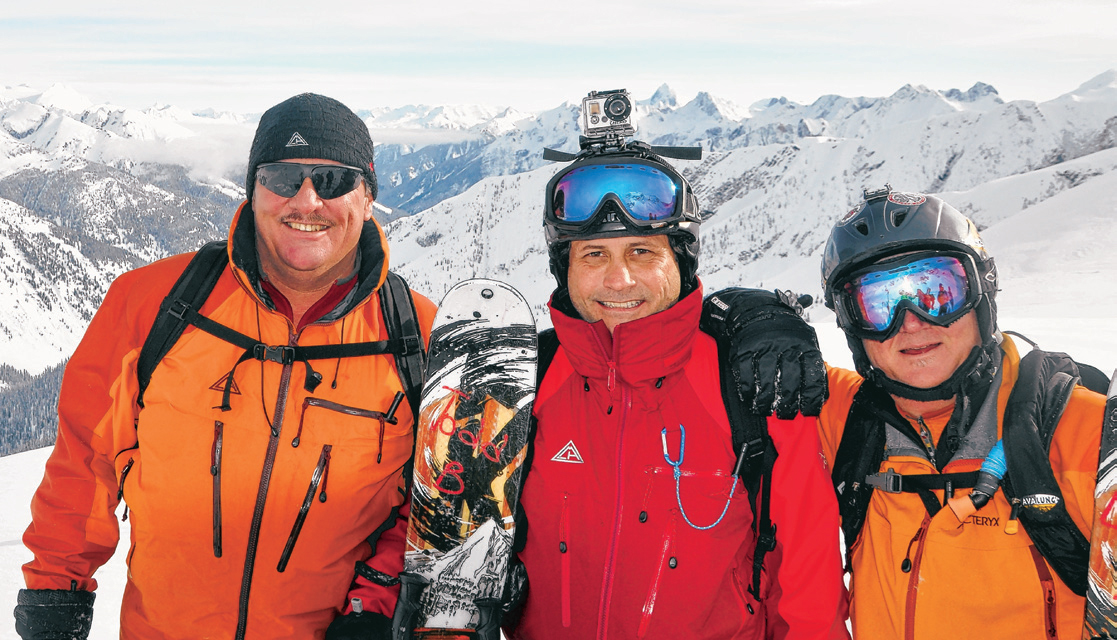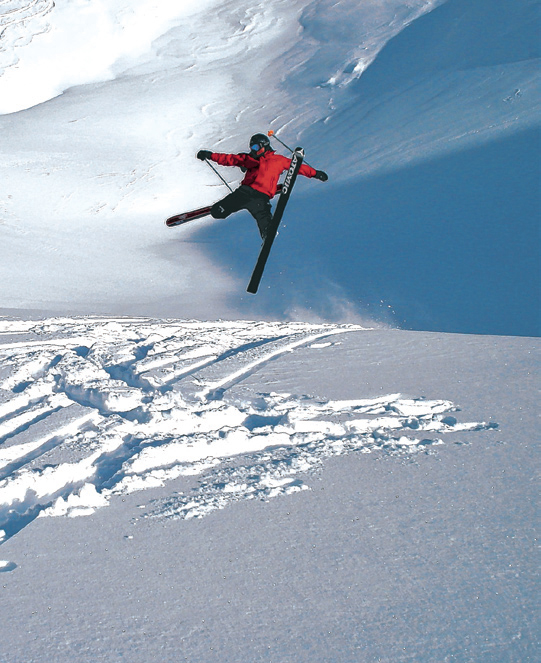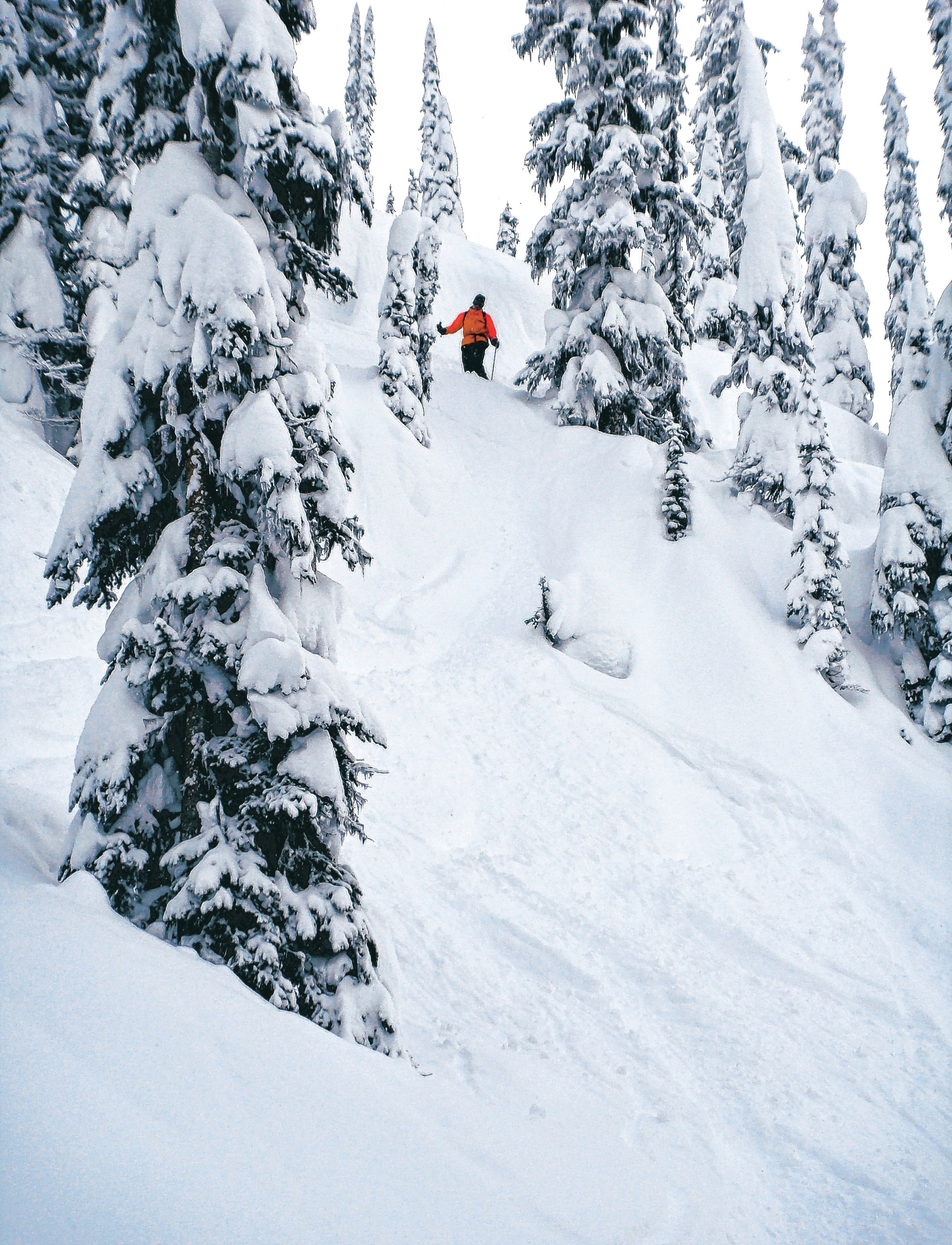The first minute is complete chaos as you leap from a helicopter, its rotors roaring right above you, stirring up a blizzard of loose powder and making it difficult to get your bearings.
But moments later, as the last whirring sounds of the helicopter fly out of earshot, you find yourself in complete silence, awestruck at the beauty and magnitude of this remote spot. "You look up all of a sudden and realize everything is completely quiet and you are on top of the world," says Dr. Todd Bonvallet, an orthopedic surgeon and medical director of the Interventional Center at Spine Surgery Associates.
Heli-skiing takes the adventurous, expert and adrenaline-fueled resort skier to whole new levels, literally, replacing the tram lift with a helicopter hop to some of the highest peaks for an experience so far removed from other ski trips that even five-year veterans have a tough time describing the overall atmosphere.
"This is a really hard thing to describe to anyone. No matter how many pictures you show or movies you show or stories you tell, the mere fact of being there really tells the story," says Bonvallet, a native of Spokane, Wash., who attended college in Montana and spent most of his life on the slopes, even spending time on a junior national freestyle circuit in middle and high school. Since taking his first heli-ski trip while in medical school he has accumulated more than 2.6 million vertical feet on these remote, extreme ski adventures.
Once he moved to Tennessee, it was many years before he found others here in Chattanooga willing and able to tackle the treacherous drops and dangerous conditions of backcountry skiing. Businessman and Chattanooga native Pete Serodino and local anesthesiologist David Musgrave each now total about 750,000 vertical feet of heli-skiing experience after joining Bonvallet on his ventures to the far reaches of the Canadian Rockies. All three added about 135,000 feet apiece during their most recent Canadian Mountain Holidays trip last month.
CMH offers 11 different self-sustaining lodges, each centered within about 400 square miles of untouched powdered terrain. "It's untouched, untracked; every person gets an untracked ride," Bonvallet describes. "Sometimes when the snow is absolutely perfect it's effortless, just like you're floating on air."
Part of the adventure is just getting there, which requires a plane ride to Calgary, a six-hour bus ride, 40-minute ferry ride, 30-minute shuttle, and then 30 more minutes by helicopter to get to the lodge. "You are remote," says Musgrave. "You go to Vail and it's 5,000 acres of skiing for 40,000 people a day; you go here there's 500,000 skiable acres for 40 people a day. Every run is powder, thigh deep."
Serodino has been skiing since the '70s, but says his first adventure heli-skiing about five years ago is something he'll never forget.
"It's an extreme shock being dropped off on top of a mountain by a helicopter," he says. "This is the ultimate skiing in the world with deep powder, steep runs, jumping down a mountain 20 feet at a time and it doesn't hurt - at least not until the end of the day."
Musgrave, who's considered the daredevil of the group, moved from Tennessee to Minnesota in the eighth grade and logged so many hours on the slopes that he was reaching a point of boredom before hopping on his first chopper trip. "Skiing was the winter thing growing up. We lived about 10 minutes from a small resort and I skied 70 to 80 times a year," he says. "When I moved back to Tennessee and went to med school I skied once or twice a year. Then I had kind of given skiing up. It wasn't that fun for me going out to the resort and skiing groomed blue runs.
"The first time I went heli-skiing I got beat up bad. But it was completely worth it," Musgrave explains. "There's a totally different feel of how you ski a groomed run at a resort versus going off the groomed runs. Having a little more freedom, the challenge, the decision-making - it's a lot harder and that's what makes it so much fun. You train all year long for this trip and you still get beat up."
In addition to the physical strains of long runs down glacial slopes, the extreme danger is ever-present with steep vertical drops, cliffs, potential slides and avalanches and tree wells. Each member of the ski party must carry a radio, a pack, a shovel, a probe, an avalanche transceiver and participate in avalanche and helicopter training. Top guides from all over the world - France, Austria, Germany - have generally been on the job for 10 or more years to lead these excursions. "We put our lives in their hands because it's dangerous, it's very dangerous," explains Bonvallet.
During last month's trip a skier from another lodge fell into a tree well, which is an inverted cone that develops in the deep snow around the treetops and funnels down to the base of the tree - a 22-foot vortex in this particular case. There were also eight slides, nearing Class IV avalanche stage, and a helicopter was destroyed when a slide struck the area where it was parked. In each case, the guides are responsible for ferrying the skiers to safety and to the next safest part of the mountain so they can continue carving the fresh powder.
"When we go to Big Sky we know the mountain where we ski, but it's 5,000 vertical acres," says Musgrave. "These guys know 500,000 vertical acres with no signs. All they're looking for is visual memories of where we're going to take people down and if (they) cut left or cut right too early you're in a shithole."
Four years ago, Musgrave tore his medial collateral ligament on the last run of the last day. Bonvallet has had five knee operations on his right knee, two of which were anterior cruciate ligament reconstructions - all as a result of snowskiing. During their last trip, other skiers from their small lodge suffered an ACL tear, a meniscus tear and a rotator cuff tear. But Bonvallet, Serodino and Musgrave are undeterred as they are already planning and anxiously awaiting the chance to go back. For Serodino and Musgrave, just two more trips should be enough for them to earn the much-coveted Million Foot Suit, given to the select few who have achieved more than 1 million vertical feet of heli-skiing.
Bonvallet already has his suit. For him, these trips are a chance to push himself to the limits, enjoy the close camaraderie that comes from participating in an extreme sport and leave the rest of the relatively flat world behind for a little while.
"These trips are something we kind of cherish and look forward to each year. If I don't do this I'm just not going to be right at all," Bonvallet explains. "It's sort of a psychological readjustment or reset button that really puts me back on track for the rest of the year. This gives me something to really look forward to every year."




